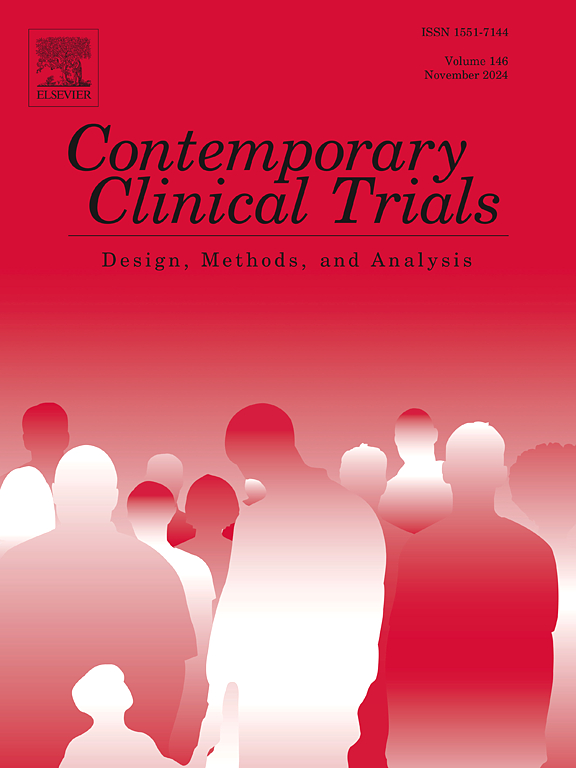Injectable buprenorphine during transition out of prison: A pilot partially randomized preference trial protocol
IF 1.9
3区 医学
Q3 MEDICINE, RESEARCH & EXPERIMENTAL
引用次数: 0
Abstract
Background
Individuals involved in the criminal legal system represent one of the most disproportionately affected populations in the opioid overdose crisis. Despite evidence of medications for opioid use disorder (MOUD) reducing overdose mortality, illicit opioid use, and recidivism, most correctional facilities do not offer these treatments. Sublocade and Brixadi, two distinct, branded, formulations of extended-release buprenorphine (XR-B), offer a promising approach to improving MOUD treatment adherence and reducing post-release overdose deaths.
Methods
This hybrid pilot study will utilize a partially randomized preference trial (PRPT) design to compare the preliminary effectiveness, feasibility, acceptability and other outcomes between Sublocade and Brixadi initiation. We aim to enroll 60 incarcerated individuals with opioid use disorder who are interested in XR-B and have a scheduled release within 120 days. Participants will choose their preferred injectable treatment or, if ambivalent, be randomly assigned. All participants will receive monthly XR-B injections pre-release and continue for three months post-release, with additional administrative follow-up for another three months. The primary outcome is post-release treatment retention; other outcomes will be assessed using the Proctor taxonomy. Data will be collected using clinical assessments, surveys, and administrative databases.
Discussion
This study explores differences in XR-B formulations during the high-risk time of transition out of prison. It combines a hybrid implementation science and preference trial design—two methodologies that can help address the specific challenges of research in carceral environments. By understanding implementation of XR-B in a prison setting, findings can provide valuable insights to guide other facilities in adopting this life-saving treatment.
出狱过渡期注射丁丙诺啡:试点部分随机偏好试验方案。
背景:在阿片类药物过量危机中,涉及刑事法律制度的个人是受影响最严重的人群之一。尽管有证据表明阿片类药物使用障碍(mod)药物可以降低过量死亡率、非法阿片类药物使用和再犯率,但大多数惩教机构并不提供这些治疗。Sublocade和Brixadi是两种不同的品牌丁丙诺啡缓释制剂(XR-B),为改善mod治疗依从性和减少释放后过量死亡提供了一种有希望的方法。方法:本混合先导研究将采用部分随机偏好试验(PRPT)设计,比较Sublocade和Brixadi起始的初步有效性、可行性、可接受性和其他结果。我们的目标是招募60名有阿片类药物使用障碍的在押人员,他们对XR-B感兴趣,并计划在120 天内释放。参与者将选择他们喜欢的注射治疗,如果犹豫不决,则随机分配。所有参与者将在释放前每月接受XR-B注射,并在释放后继续注射3个月,并进行另外3个月的行政随访。主要结局是释放后治疗保留;其他结果将使用Proctor分类法进行评估。数据将通过临床评估、调查和管理数据库收集。讨论:本研究探讨了出狱高危时期XR-B制剂的差异。它结合了混合实施科学和偏好试验设计,这两种方法可以帮助解决在癌症环境中研究的具体挑战。通过了解XR-B在监狱环境中的实施情况,研究结果可以为指导其他设施采用这种挽救生命的治疗提供有价值的见解。
本文章由计算机程序翻译,如有差异,请以英文原文为准。
求助全文
约1分钟内获得全文
求助全文
来源期刊
CiteScore
3.70
自引率
4.50%
发文量
281
审稿时长
44 days
期刊介绍:
Contemporary Clinical Trials is an international peer reviewed journal that publishes manuscripts pertaining to all aspects of clinical trials, including, but not limited to, design, conduct, analysis, regulation and ethics. Manuscripts submitted should appeal to a readership drawn from disciplines including medicine, biostatistics, epidemiology, computer science, management science, behavioural science, pharmaceutical science, and bioethics. Full-length papers and short communications not exceeding 1,500 words, as well as systemic reviews of clinical trials and methodologies will be published. Perspectives/commentaries on current issues and the impact of clinical trials on the practice of medicine and health policy are also welcome.

 求助内容:
求助内容: 应助结果提醒方式:
应助结果提醒方式:


